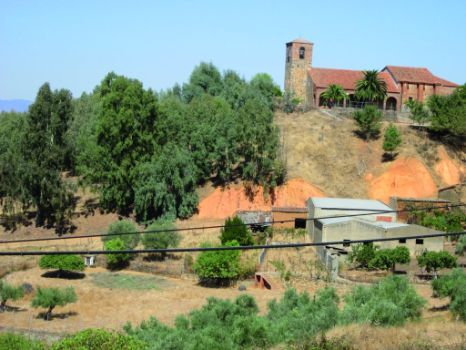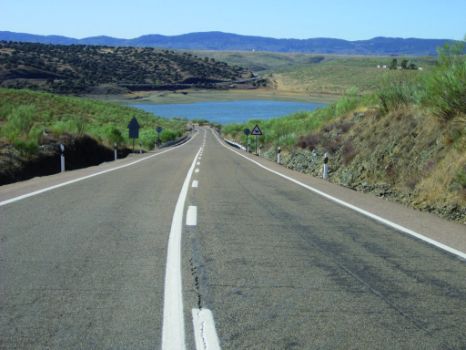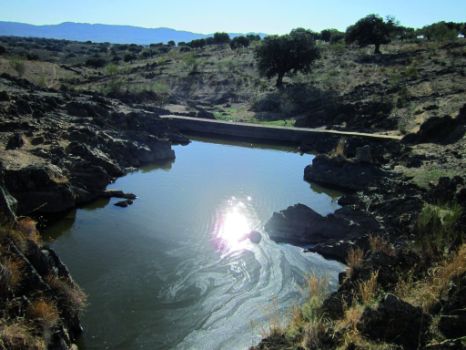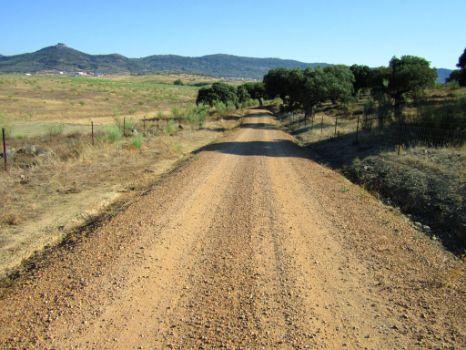Net of Natural
Trails

Stage 20: Castilblanco - Herrera del Duque
Description
Through the Extremaduran dehesa; towards García de Sola Reservoir
This Stage, which links the towns of Castilblanco and Herrera del Duque, runs along paved roads that traverse through broom and grasslands or holm oak dehesas on pastures where livestock graze.

The route begins at Castilblanco’s main square, where the intercity bus stop is located. It continues through narrow streets with several sites of interest, including the Church of San Cristóbal, a Mudejar, red-brick building built in the 15th century. The church is somewhat removed from the route, but worth visiting.
The route heads out of Castilblanco via the BA-049, the old access road; however, it is interrupted when it reaches the N-502, a national road.
The Stage reappears about eight kilometres further on, past the Guadiana Valley, when it reaches several dirt roads that emerge from the left of the N-502. One of these is Honda del Camino de la Neva, a livestock trail along which the route runs for a few hundred metres, traversing through livestock farmlands, and an occasional rain-fed field of crops.

An interesting detail worth noting is the ingenuity of the local people in creating artificial watering holes for livestock in this area north of Herrera del Duque. Diversion dams, sometimes staggered, are a common sight on small streams. It is fascinating to see European tree frogs (Hyla arbórea)jumping around with just about every step.
Past the dehesas along which the Trail has ventured, the route continues along a treeless plain, from where one can see how close Herrera del Duque is.
One can first see the castle, perched atop the Chamorro Mountain Range, and then the town itself, at the edge of a vast plain with a gentle downward slope, covered with pastures and livestock farms.

The route enters the town through a small housing development (still under construction at the time of publication of this book). Once on the paved streets of Herrera del Duque, the route crosses the square where the Palace of Culture is located and, continues along a long, wide street to Avenida de la Palmera, where the Stage ends.
In the centre of the avenue is a large landscaped median with benches, where one can rest before the next Stage. It also has several information panels on the most important cultural features at Herrera, in case the traveller is interested in learning more about the town before continuing along the Trail.
It should be noted that, as in previous sections, much of the route has traversed a protected area, in this case, the “Puerto Peña-Los Golondrinos” SCI (Site of Community Importance) and SPA (Special Protection Area for Birds).
Sites of interest
Profile
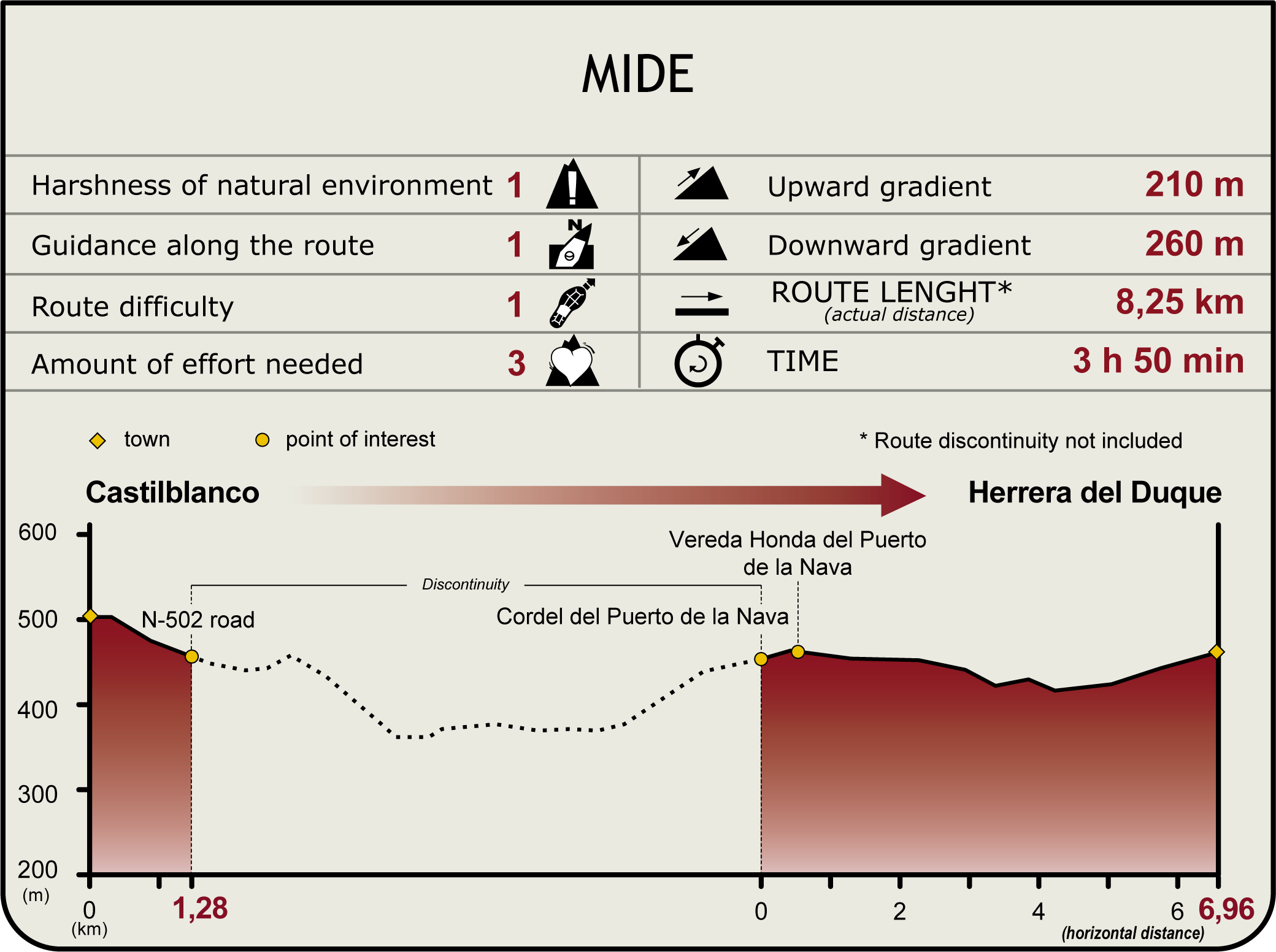
Highlights
Further information
Church of San Cristóbal
The Church of San Cristóbal de Castilblanco is a 15th-century, Mudejar temple built with masonry and Toledo bricks. The bell tower and walls were part of the original Templar fortress.
The temple has undergone many changes over time. The structure is the only original building that remains. It is divided into three naves, of which the central nave is the highest. The apse is ceiled with a quarter-sphere vault. An 18th-century wooden choir stands at the foot of the apse, and below it is the baptistery with a Gothic font. The original carved wooden ceiling was destroyed by fire in the nineteenth century.
As for the interior decoration, the altarpieces and statues that graced the temple have disappeared over time. The only statue that remains is a 12th-century recumbent Christ, something of a rarity in Romanesque sculpture.



